Pressure Surge Management Master Class: The role of VSAs

Dr Matthias Rebhan, General Manager SIPOS Aktorik (left) and David Buchwald, President of Pipestone Equipment
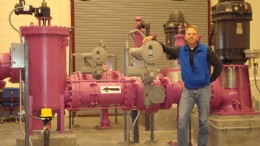
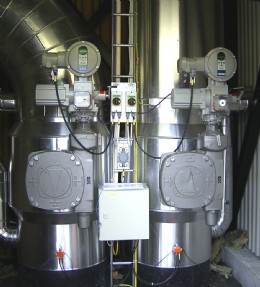
Variable Speed Actuation technology addresses water hammer
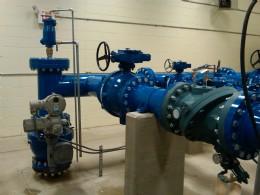
A VSA actuator bridges the gap between theory and reality for control of pressure surges
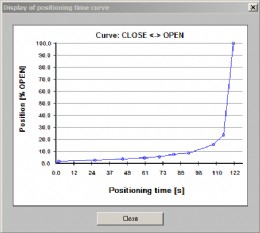
Illustration of a stroke-positioning time function for the VSA actuator.
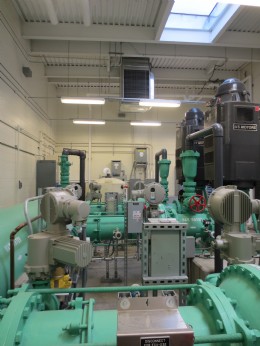
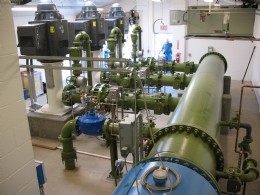
Pump station installations using SIPOS actuators
The Problem
In the same way that a lift would jolt and jar to a halt if it wasn’t gently eased into stopping, water flow needs to be ‘caressed’ to avoid the sudden halting of the flowing medium when kinetic energy is turned into pressure and pressure peaks associated with water hammer are created.
Pressure surges are often caused by valves closing quickly with excessive pressure variation in front of, and after, the valve. Pressure peaks, due to simultaneous closing of several valves within closed systems, can also be experienced. Another trigger for a surge may be the quick start of a powerful pump.
Pumps can also fail due to power shortages, and pipeline breaks can generate pressure surges which cause further damage to the entire system.
Actuators are historically selected to open or close within a specified time, which defines the output speed. Typical water industry pump control ball valves have very high flow capacities (Cv) and, when combined within a waterline, have non-linear flow capacity curveswhereby relatively small opening percentages (i.e. 10%) result in capacities of greater than 50% and full flow rates can be achieved at openings in the one third range. Constant speed actuation therefore only provides flow rate control over approximately the first third of the operating time. Additionally, the control provided is non-linear and is determined by the valve, not the actuator’s, characteristics.
Ball valves have a rugged, simple design and a high volume throughput which minimises headloss during pumping operation and saves energy cost. When a high capacity ball valve is combined with a waterline and pump station, the flow capacity of the waterline quickly becomes a limiting factor. Effective valve control is therefore essential for maximising the benefits of ball control valves, while minimising transients within the system.
The Solution
Transient overpressures and low pressures, also called water hammer, can be reduced by combining a pump with additional start-up control and a ball valve with a Variable Speed Actuator. Pressure relief valves and/or bladder surge vessels can also be used to aid pressure surge reduction and system attenuation.
With variable speed functionality directly integrated into the firmware, VSAs have been proven to minimise,or completely avoid, water hammer using intelligent control of pump or pressure compensation valves.
Free selection of output speed is the basis of VSA actuator technology. This is achieved using an integrated frequency converter for control: intelligent software within the actuator not only controls the motor but also provides a customised stroke-positioning time function.
Ideal pump station start-up and shut-down sequences would accelerate and decelerate water within the pipeline at a constant linear rate. Due to the complex inter-relationship between pump curve, ball valve Cv curve and pipeline configuration, achieving linear flow rate changes has traditionally been difficult to achieve. However, if the rotational speed of the valve shaft during the opening and closing sequences could be varied, linearisation becomes possible. With this ability, computations could be made to determine valve shaft rotational speed at various points during operation and a valve could be programmed to essentially be a linear control device for that specific installation site. This theory applies to any type of valve or gate, any water source and any type of fluid control system.
Bridging the gap between theory and reality is the VSA device. By defining up to ten value pairs the required parameters may be set directly within the actuator according to the system characteristics.
Once programmed, the VSA will operate the valve as required to achieve optimised and linearised flow rate changes. Separate operation curves for opening or closing the valve can be specified. The software presents the entered values on a chart enabling quick verification of figures. For the operator, the result is a practical linear relation of run time and throughput.
Conclusion
Rapid high pressure build-up of water in pump station pipelines results in shock waves. In worst case scenarios, pipelines can rupture and break: vacuum can also be created that causes pipes to collapse or implode.
The impact of water hammer is therefore, not to be underestimated and actuation advancements such as the VSA are pioneering solutions that address this very real problem.
The skills of automation and fluid-dynamic experts, such as Pipestone Equipment, play an important role in the implementation of VSA technology. As business partners to SIPOS Aktorik, they complement the actuator developer’s engineering and technical knowledge with automation expertise and practical installation knowledge.
SIPOS Aktorik specialises in electric actuators for applications including the water and power industries.
The company’s actuation solutions aid engineers in meeting individual scheme’s requirements ranging from standard open / close and modulating functionality, frequently specified by the power industry, to water hammer prevention. Pioneering Variable Speed Actuation applications include adoption in a practical end product suitable for installation on valves and gates: the actuators act as a tool which supports engineers’ responses to hydraulic analysis results by implementing optimum stroke-time curves.
SIPOS Aktorik
Tel: 01275 871141
www.sipos.de
Published: 13th May 2014
Rachel Wormald, Managing Director at YPS Valves Ltd and Elizabeth Waterman, ...
Are you looking for industry-leading, brand independent valve and actuator ...
As can be seen from the photograph, clearly the resident birds at Bartlett ...
Howco Group has unveiled its latest £1million investment, with the ...
In 2024, Allvalves is poised for an exciting year of growth and expansion, ...
GMM Pfaudler Engineered Plastics & Gaskets are delighted to bring the ...
In the ever-evolving valve industry, GMM Pfaudler stands out for its ...
SAMSON Controls Ltd – part of the SAMSON group - a renowned leader in ...










